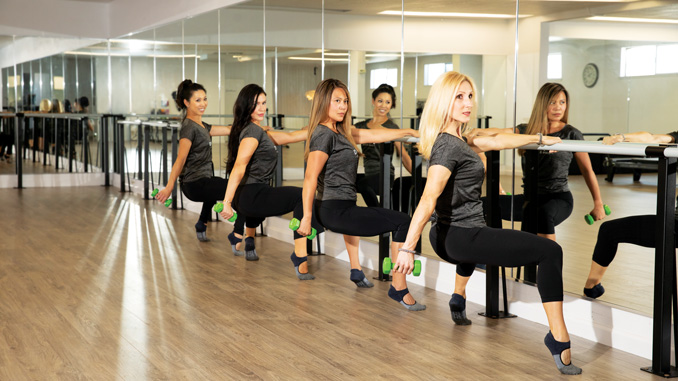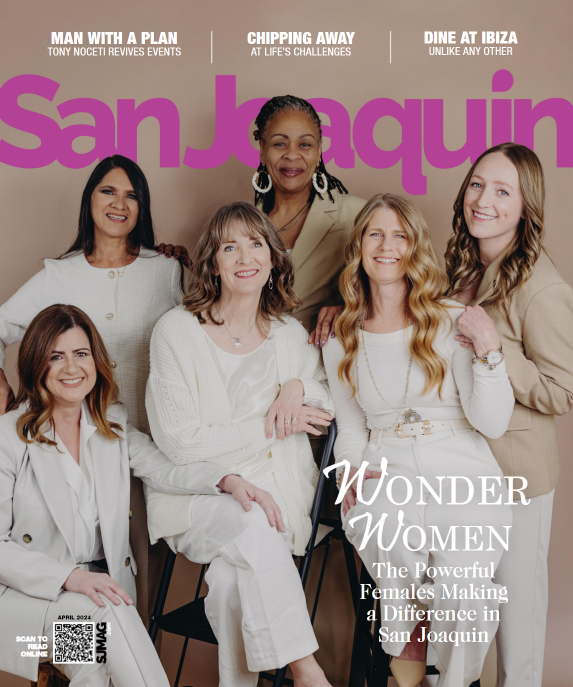
It’s not just about fitness; it’s about aesthetic and grace.
You stand up straight, tighten every muscle in your body, and channel your inner swan every second of the workout. The rules are simple: If you want to have that beautiful dancer’s body, then your practice must be beautiful, too.
We’re talking about Barre, the exercise program that’s taking America’s fitness culture by storm. Inspired by ballet and practiced by the average Joe (or rather, Josephine), in Barre, fitness means strength, but it also means posture and poise.
“It’s all about alignment,” says Alina Gibson, Barre Instructor and owner of Define Barre and Fitness studio in Stockton. “Everything we’re doing at our studio is geared toward attaining proper body alignment, improving posture, as well as improving your self-esteem and making you feel your best.”
Alignment aside, those who practice barre increase their strength and stamina without bulking up. So, if you’re tired of pumping iron and hitting the treadmill, barre might be the perfect booster shot to your routine.
“If you look at dancers, they have extremely long and lean muscles; they’re not bulky,” says Alina. “So, in barre, we’re shaping, lifting, lengthening, and toning. As a result, you’re going to get stronger, leaner muscles.”
And make no mistake, this isn’t just another fitness fad. Though popularity has surged in the past few years, barre classes have been around for almost six decades.
The story begins with German dancer Lotte Berk: Having fled the Nazis in the late 1930s, Lotte moved to London where she suffered a back injury. During her rehabilitation, the dancer realized she could combine her ballet bar routines with her rehabilitation therapy to form an exercise program.
Eager to share the program with others, in 1959, Lotte opened a studio in her West End basement, inspiring her students and others to open their own studios as well—and so the practice spread. Original students of Lotte Berk included Brooke Shields, Joan Collins, and Britt Ekland.
Today, it seems that barre classes haven’t lost any of their original charm; in the tradition of barre-pioneers, Alina Gibson simply fell in love with the practice and wanted to share it with others. Though she started dancing at age three, Alina emphasizes that you don’t have to be a ballerina to take a barre class.
“You don’t need any dance experience at all. You will learn dance positions, like ‘first position’ or relevé, but you’re not dancing—you’re just holding the position and working those muscle groups.”
Thanks to the isometric movements that characterize this fitness routine, barre allows you to build strength and burn calories without putting pressure on your joints. With no jumping or cardio, barre is perfect for anyone with lower-back or knee issues, from an athlete coming off an injury, to expecting mothers, to silver foxes.
“I have clients in their 70’s who come to my class religiously,” says Alina. “There’s just so many things you can do where you don’t have to be running, lifting dumbbells, or bench pressing.”
With fitness balls, weights, and bands provided, all you need to bring to your first class is your activewear, a pair of grip socks, and a good attitude. And with a $10 special on your first class at Define Barre and Fitness, there’s no better time to “raise the bar” on your fitness routine.
“People often say, ‘I feel like I found my inner ballerina!’” Alina laughs. “It’s all about how your workout makes you feel. At the end of a barre class, you feel proud and empowered. Every class is a new challenge.”
Define Barre & Fitness
(209) 629-2642
definebarreandfitness.com

